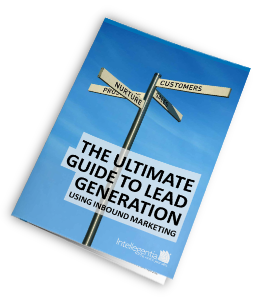
In this blog, we will explore some common misconceptions people have about Inbound Marketing and we will attempt to debunk them.
1. IT'S IMPOSSIBLE TO PROVE THE ROI OF INBOUND MARKETING
Well in this case the exact opposite is true. Because inbound marketing happens online, you can track every step a prospect takes from initial pages visited on your website, to content downloaded to conversion to sale. Every time you put up a new piece of content or blog, you can track the number of visitors, who downloaded your content, how well your Calls to Action (CTAs) are performing and so on. With this depth of information available, calculating your marketing ROI is really easy.
In the HubSpot State of Inbound Survey 2016 they found that marketers who check their metrics 3x+ a week are over 20% more likely to achieve positive ROI.
2. INBOUND IS THE BE-ALL AND END-ALL
We truly believe in the power of inbound but we know for many organisations it still makes sense to incorporate some outbound marketing tactics. The difference between Inbound and outbound techniques is that when it comes to Inbound, you’re growing an organic audience that, with the right nurturing, will keep your sales funnel full of qualified leads. With traditional marketing, you’re paying for a temporary audience; an audience that may or may not be relevant and therefore will be less likely to convert.
3. YOU DON'T NEED A DEDICATED RESOURCE FOR INBOUND
Incorrect - to be successful at Inbound Marketing you do need someone with a clear understanding of how it works. Having someone who "just does a bit of social here and there" is not the same. To do Inbound properly, you need to know how to attract the right visitors to your website and then how to convert them to leads. Those leads may need nurturing and successful lead nurturing requires having the right tools in place to measure and track results.
4. INBOUND SIGNIFIES THE DEATH OF THE SALES REP
Wrong – we know the buying process has changed and potential customers are nearly two-thirds of the way through the sales cycle before they even start talking to a vendor. But this does not signal the end for B2B sales reps – it just means that some collaboration is required.
The increasingly competitive environment puts a lot of pressure on Sales and Marketing to communicate more effectively and work together rather than in silos, or run the risk of losing out on valuable customers. With full Sales and Marketing alignment, their mutual and complete understanding of the buyer allows them to agree on the necessary messages and communicate with their buyer accordingly, sending only the most relevant and valuable material.
5. BLOGGING DOESN'T BRING IN CUSTOMERS
Not so - in fact, HubSpot research has found just the opposite - the more you blog, the more customers you’ll be able to trace back to your blog. In the HubSpot State of Inbound Survey 2016 they found that a whopping 92% of companies who blog multiple times a day acquire customers through their blog.
Blogging is a great platform for informing and engaging with potential customers, and can provide a significant advantage over your competitors. Blogging can help you fill the top of your sales funnel as well as convert leads. It can generate traffic to your website and help with SEO, which further increases your chances of being found by potential buyers. But blogging should be conducted as part of an overall inbound strategy.
To conclude, Inbound marketing is here to stay and when done properly it can bring significant benefits in terms of generating leads. Download our eBook below for a step-by-step guide to delivering higher quality leads to your sales team.

.png?width=250&height=76&name=Intellegentia%20Logo%20(MAIN).png)